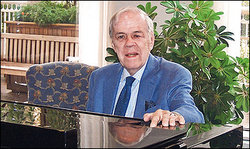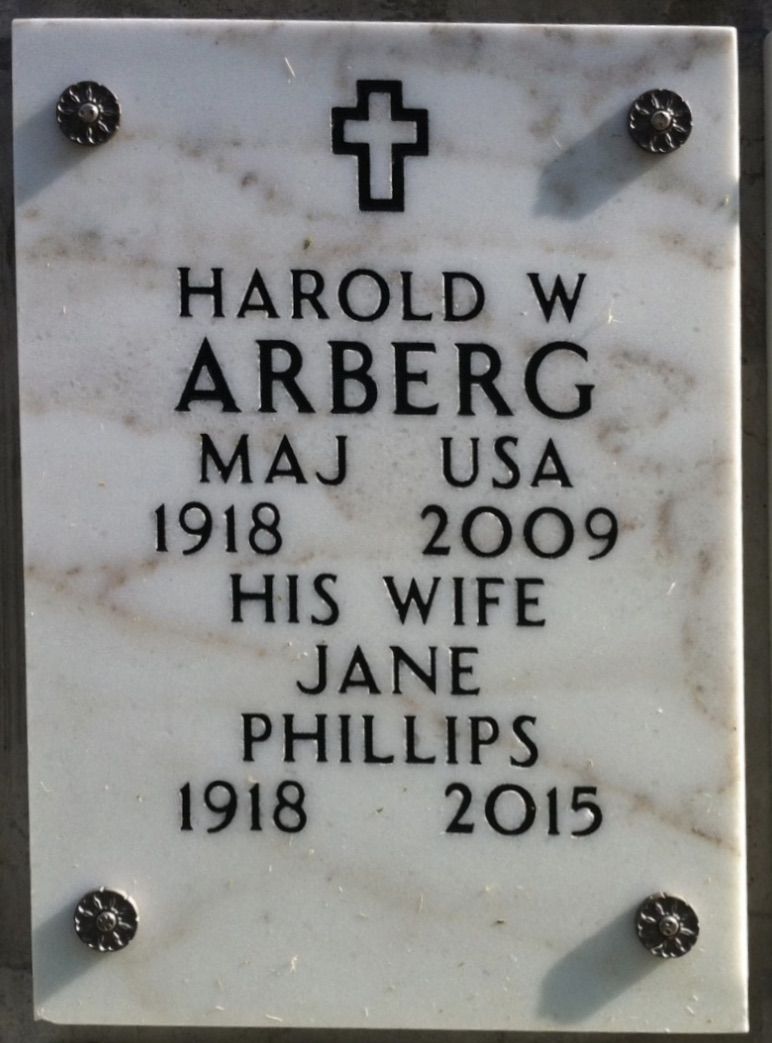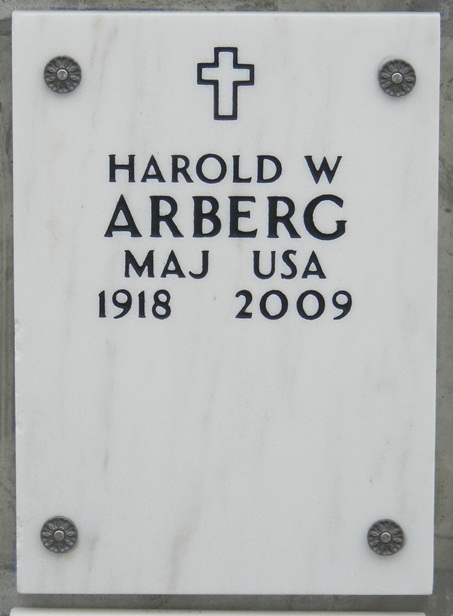+++++++++++++++++++++++
It took the Army three tries and nearly half a century to come up with an official song before Dr. Arberg, then a member of the Army's Special Services Division, got it right. The Navy, Marine Corps, Air Force and Coast Guard all had their official songs, and the Army sang what might have been the best-known military song of all: "Over hill, over dale, we have hit the dusty trail, as our caissons go rolling along." But "The Caissons Go Rolling Along," written in 1908 by then-1st Lt. Edmund L. "Snitz" Gruber, never received official status.
Toward the end of World War I, composer and bandmaster John Philip Sousa added a few introductory measures to Gruber's piece and renamed it "The U.S. Field Artillery March." Sousa's version became a huge hit, although it never became official, in part because the lyrics referred to the field artillery and not the Army as a whole.
The Army resumed its search for a song in the late 1940s, about the time Dr. Arberg was serving as an Army musician in Iran. In 1948, he became a reserve officer at Fort Monmouth, N.J.
"An All-Army song contest the previous year had produced five new songs, including one by Vaughn Monroe, the popular bandleader and singer," Dr. Arberg told the Army Times in 2003. "They were well-crafted songs, but none inspired much response from soldiers or the general public."
Dr. Arberg returned to active duty in 1951 and was assigned to the Pentagon. As the new musical officer, he was summoned by Lt. Col. Bryce Denno, military aide to Army Secretary Frank Pace Jr. "He's tired of going to functions where 'Anchors Aweigh' and the Air Force and Marine songs are played, when there is no Army song," Dr. Arberg said Denno told him.
Dr. Arberg began looking for songwriters interested in taking on the mission. Those he visited, including Irving Berlin, Oscar Hammerstein II and Johnny Mercer, "were polite but unresponsive," Dr. Arberg recalled in the Army Times interview.
Then he talked to Sam H. Stept, the prolific songwriter who co-wrote the popular wartime hit "Don't Sit Under the Apple Tree" (1942). Stept came up with what Dr. Arberg called "a rousing marching song" called "The Army's Always There."
A selection committee awarded the song official status, and the Army band performed it while marching down Pennsylvania Avenue during the 1953 inauguration of President Dwight D. Eisenhower. Unfortunately for the composer, too many people thought they were hearing "I've Got a Lovely Bunch of Coconuts," a well-known English song. Fearing legal challenges, the Army shelved "The Army's Always There."
In 1956, new Army Secretary Wilbur M. Brucker decided the Army should adopt the old standard, "The Caissons Go Rolling Along." Dr. Arberg wrote new lyrics ("First to fight for the right, and to build the Nation's might, and The Army Goes Rolling Along") and a new musical introduction, and on Veterans Day 1956 Gruber's "Caisson" song became "The Army Goes Rolling Along," the official song of the U.S. Army.
Harold Walton Arberg was born Aug. 19, 1918, in Brooklyn, N.Y. After receiving a bachelor's degree in music from Princeton University in 1940, he served in the Army's Persian Gulf Command during World War II, writing and conducting musical shows. He received a master's degree in 1948 and a doctorate in 1951, both in education from Columbia University.
Returning to active duty during the Korean War, his Special Services assignments included seeking ways to inspire soldiers through barbershop harmonizing.
After a decade on active duty, he was named head of the cultural affairs branch of the U.S. Office of Education. Later, as director of the arts and humanities branch of the Office of Education, one of his aims was to assimilate the arts into the regular public school curriculum.
"We hope to make the arts a part of the cake rather than the icing on the cake, which is the way music, art, theater, dance and film are frequently taught now in schools," he told the New York Times in 1976. He retired from the Department of Education in 1983.
Dr. Arberg, who once wrote a bicentennial musical called "The Decision," which starred Hugh O'Brian as George Washington, was appointed to a committee in 1957 to "tidy up" "The Star-Spangled Banner." As countless national anthem singers can testify, that task was left undone.
+++++++++++++++++++++
Survivors
Wife: of 68 years, Jane Phillips Arberg of Arlington, VA.
Children:
Harold W. Arberg Jr. of Martinsburg, W.VA.
Phillips A. Arberg of Las Vegas, NV.
Charles S. Arberg, Alexandria, VA.
Robert C. Arberg, Alexandria, VA.
Eight Grandchildren; and a Great-Granddaughter.
+++++++++++++++++++++
Obit from Princeton Edu
Bud died of pneumonia Aug. 4, 2009, at Virginia Hospital Center in Arlington.
Yick Kuwayama, who attended the funeral, reported, "It was quite a service, run by his godchildren and children. They called it a celebration."
The Los Angeles Times and The Washington Post featured extensive obituaries on Harold's musical contributions to the Army, namely, his revised lyrics to "The Caissons Go Rolling Along," which became "The Army Goes Rolling Along" — official song of the U.S. Army. We also thank Calvin MacCracken's son, Mike '64, for his mailing.
After Montclair (N.J.) High School, Bud majored in music at Princeton, where he was a member of the Glee Club, Triangle Club, International Relations Club, the Christian Science Organization, and Key and Seal. He graduated with honors.
During World War II, he served with the Army in the Persian Gulf Command. He then earned a master's and doctoral degrees in education from Columbia University before being recalled to duty during the Korean War. Bud later became director of the arts and humanities division of the Department of Education in Washington.
Although Bud composed more than 100 musical numbers, we aver that "Forward with Forty" ranks at the top. Bud enlivened reunions, leading songfests from the piano bench.
To his survivors, wife Jane (Phillips); sons Harold Jr., Phillips, Charles, and Robert; eight grandchildren; and one great-granddaughter, his classmates extend their deep sympathies.
The Class of 1940
++++++++++++++++++++
The Official Army Song
The Army Goes Rolling Along
++++++++++++++++++++++
March along, sing our song,
With the Army of the free
Count the brave, count the true,
Who have fought to victory
We're the Army and proud of our name
We're the Army and proudly proclaim
First to fight for the right,
And to build the Nation's might,
And The Army Goes Rolling Along
Proud of all we have done,
Fighting till the battle's won,
And the Army Goes Rolling Along.
Then it's Hi! Hi! Hey!
The Army's on its way.
Count off the cadence loud and strong (TWO! THREE!)
For where e'er we go,
You will always know
That The Army Goes Rolling Along.
Valley Forge, Custer's ranks,
San Juan Hill and Patton's tanks,
And the Army went rolling along
Minute men, from the start,
Always fighting from the heart,
And the Army keeps rolling along.
Then it's Hi! Hi! Hey!
The Army's on its way.
Count off the cadence loud and strong (TWO! THREE!)
For where e'er we go,
You will always know
That The Army Goes Rolling Along.
Men in rags, men who froze,
Still that Army met its foes,
And the Army went rolling along.
Faith in God, then we're right,
And we'll fight with all our might,
As the Army keeps rolling along.
Then it's Hi! Hi! Hey!
The Army's on its way.
Count off the cadence loud and strong (TWO! THREE!)
For where e'er we go,
You will always know
That The Army Goes Rolling Along.
+++++++++++++++++++++
A Special THANK YOU to graver: Ray Rauanheimo for Cemetery and Plot information.
A Special THANK YOU to graver: Anne Cady for Headstone Plaque photos.
A Special THANK YOU to graver: wmpr2 for sponsoring Harold's page.
+++++++++++++++++++++
+++++++++++++++++++++++
It took the Army three tries and nearly half a century to come up with an official song before Dr. Arberg, then a member of the Army's Special Services Division, got it right. The Navy, Marine Corps, Air Force and Coast Guard all had their official songs, and the Army sang what might have been the best-known military song of all: "Over hill, over dale, we have hit the dusty trail, as our caissons go rolling along." But "The Caissons Go Rolling Along," written in 1908 by then-1st Lt. Edmund L. "Snitz" Gruber, never received official status.
Toward the end of World War I, composer and bandmaster John Philip Sousa added a few introductory measures to Gruber's piece and renamed it "The U.S. Field Artillery March." Sousa's version became a huge hit, although it never became official, in part because the lyrics referred to the field artillery and not the Army as a whole.
The Army resumed its search for a song in the late 1940s, about the time Dr. Arberg was serving as an Army musician in Iran. In 1948, he became a reserve officer at Fort Monmouth, N.J.
"An All-Army song contest the previous year had produced five new songs, including one by Vaughn Monroe, the popular bandleader and singer," Dr. Arberg told the Army Times in 2003. "They were well-crafted songs, but none inspired much response from soldiers or the general public."
Dr. Arberg returned to active duty in 1951 and was assigned to the Pentagon. As the new musical officer, he was summoned by Lt. Col. Bryce Denno, military aide to Army Secretary Frank Pace Jr. "He's tired of going to functions where 'Anchors Aweigh' and the Air Force and Marine songs are played, when there is no Army song," Dr. Arberg said Denno told him.
Dr. Arberg began looking for songwriters interested in taking on the mission. Those he visited, including Irving Berlin, Oscar Hammerstein II and Johnny Mercer, "were polite but unresponsive," Dr. Arberg recalled in the Army Times interview.
Then he talked to Sam H. Stept, the prolific songwriter who co-wrote the popular wartime hit "Don't Sit Under the Apple Tree" (1942). Stept came up with what Dr. Arberg called "a rousing marching song" called "The Army's Always There."
A selection committee awarded the song official status, and the Army band performed it while marching down Pennsylvania Avenue during the 1953 inauguration of President Dwight D. Eisenhower. Unfortunately for the composer, too many people thought they were hearing "I've Got a Lovely Bunch of Coconuts," a well-known English song. Fearing legal challenges, the Army shelved "The Army's Always There."
In 1956, new Army Secretary Wilbur M. Brucker decided the Army should adopt the old standard, "The Caissons Go Rolling Along." Dr. Arberg wrote new lyrics ("First to fight for the right, and to build the Nation's might, and The Army Goes Rolling Along") and a new musical introduction, and on Veterans Day 1956 Gruber's "Caisson" song became "The Army Goes Rolling Along," the official song of the U.S. Army.
Harold Walton Arberg was born Aug. 19, 1918, in Brooklyn, N.Y. After receiving a bachelor's degree in music from Princeton University in 1940, he served in the Army's Persian Gulf Command during World War II, writing and conducting musical shows. He received a master's degree in 1948 and a doctorate in 1951, both in education from Columbia University.
Returning to active duty during the Korean War, his Special Services assignments included seeking ways to inspire soldiers through barbershop harmonizing.
After a decade on active duty, he was named head of the cultural affairs branch of the U.S. Office of Education. Later, as director of the arts and humanities branch of the Office of Education, one of his aims was to assimilate the arts into the regular public school curriculum.
"We hope to make the arts a part of the cake rather than the icing on the cake, which is the way music, art, theater, dance and film are frequently taught now in schools," he told the New York Times in 1976. He retired from the Department of Education in 1983.
Dr. Arberg, who once wrote a bicentennial musical called "The Decision," which starred Hugh O'Brian as George Washington, was appointed to a committee in 1957 to "tidy up" "The Star-Spangled Banner." As countless national anthem singers can testify, that task was left undone.
+++++++++++++++++++++
Survivors
Wife: of 68 years, Jane Phillips Arberg of Arlington, VA.
Children:
Harold W. Arberg Jr. of Martinsburg, W.VA.
Phillips A. Arberg of Las Vegas, NV.
Charles S. Arberg, Alexandria, VA.
Robert C. Arberg, Alexandria, VA.
Eight Grandchildren; and a Great-Granddaughter.
+++++++++++++++++++++
Obit from Princeton Edu
Bud died of pneumonia Aug. 4, 2009, at Virginia Hospital Center in Arlington.
Yick Kuwayama, who attended the funeral, reported, "It was quite a service, run by his godchildren and children. They called it a celebration."
The Los Angeles Times and The Washington Post featured extensive obituaries on Harold's musical contributions to the Army, namely, his revised lyrics to "The Caissons Go Rolling Along," which became "The Army Goes Rolling Along" — official song of the U.S. Army. We also thank Calvin MacCracken's son, Mike '64, for his mailing.
After Montclair (N.J.) High School, Bud majored in music at Princeton, where he was a member of the Glee Club, Triangle Club, International Relations Club, the Christian Science Organization, and Key and Seal. He graduated with honors.
During World War II, he served with the Army in the Persian Gulf Command. He then earned a master's and doctoral degrees in education from Columbia University before being recalled to duty during the Korean War. Bud later became director of the arts and humanities division of the Department of Education in Washington.
Although Bud composed more than 100 musical numbers, we aver that "Forward with Forty" ranks at the top. Bud enlivened reunions, leading songfests from the piano bench.
To his survivors, wife Jane (Phillips); sons Harold Jr., Phillips, Charles, and Robert; eight grandchildren; and one great-granddaughter, his classmates extend their deep sympathies.
The Class of 1940
++++++++++++++++++++
The Official Army Song
The Army Goes Rolling Along
++++++++++++++++++++++
March along, sing our song,
With the Army of the free
Count the brave, count the true,
Who have fought to victory
We're the Army and proud of our name
We're the Army and proudly proclaim
First to fight for the right,
And to build the Nation's might,
And The Army Goes Rolling Along
Proud of all we have done,
Fighting till the battle's won,
And the Army Goes Rolling Along.
Then it's Hi! Hi! Hey!
The Army's on its way.
Count off the cadence loud and strong (TWO! THREE!)
For where e'er we go,
You will always know
That The Army Goes Rolling Along.
Valley Forge, Custer's ranks,
San Juan Hill and Patton's tanks,
And the Army went rolling along
Minute men, from the start,
Always fighting from the heart,
And the Army keeps rolling along.
Then it's Hi! Hi! Hey!
The Army's on its way.
Count off the cadence loud and strong (TWO! THREE!)
For where e'er we go,
You will always know
That The Army Goes Rolling Along.
Men in rags, men who froze,
Still that Army met its foes,
And the Army went rolling along.
Faith in God, then we're right,
And we'll fight with all our might,
As the Army keeps rolling along.
Then it's Hi! Hi! Hey!
The Army's on its way.
Count off the cadence loud and strong (TWO! THREE!)
For where e'er we go,
You will always know
That The Army Goes Rolling Along.
+++++++++++++++++++++
A Special THANK YOU to graver: Ray Rauanheimo for Cemetery and Plot information.
A Special THANK YOU to graver: Anne Cady for Headstone Plaque photos.
A Special THANK YOU to graver: wmpr2 for sponsoring Harold's page.
+++++++++++++++++++++
Inscription
HAROLD W ARBERG MAJ USA 1918 2009










